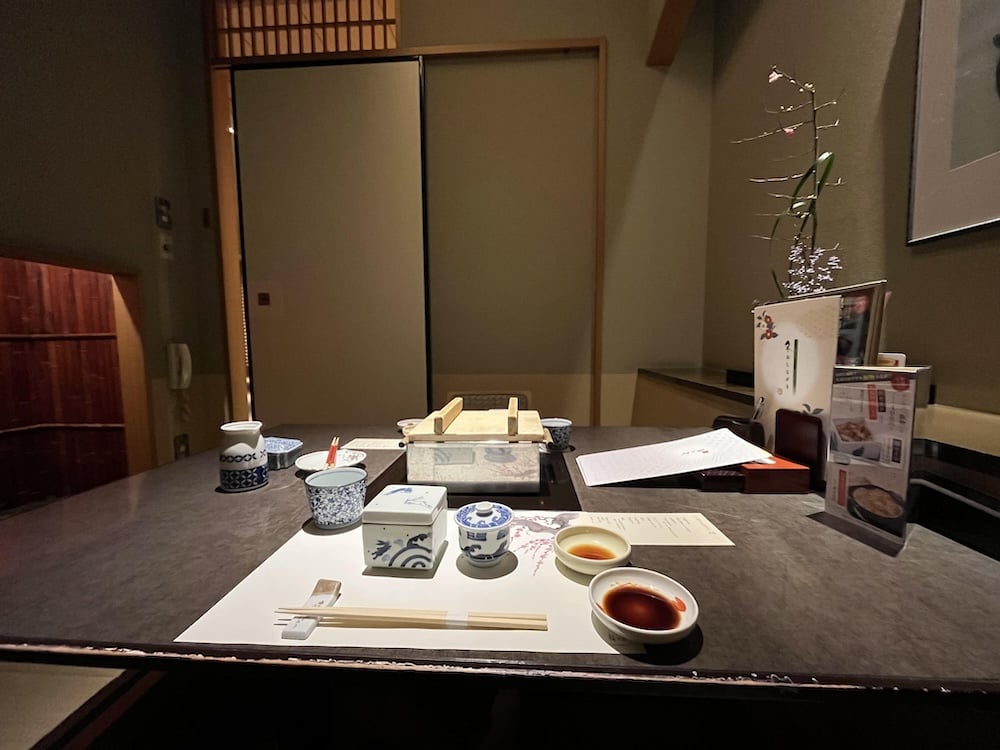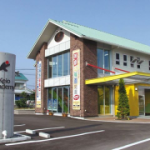
Japan’s cuisine is renowned all over the world. From Osaka’s takoyaki to Kumamoto’s Japanese mustard-filled lotus root, food in Japan has much to offer. The variety available throughout the country provides years and years of new and delicious dishes to try.
And while foods like ramen, pork cutlet, or Japanese-style curry are often the focus of travel guides, why not spend some time getting familiar with the more traditional side? Since this can include some lesser-known ingredients, a good way to explore it is through kaiseki ryōri (懐石料理), or Japanese haute cuisine.
Upon first glance, it appears to be a simple course meal. However, as the name suggests, it is anything but. Kaiseki ryōri is a product of Buddhist tea ceremony culture in the 16th century. However, it has evolved over time to stand on its own as a multi-course meal that aims to create a total sensory experience for the diner. This is achieved through various means, only a fraction of which is the food itself. Presentation of the food, the very dishes on which items are served, the restaurant’s decor, and oftentimes even the landscape outside of the restaurant (which in some cases is visible while dining) are all important considerations for the chef and staff.
A few key concepts help guide a chef’s decisions to achieve this immersive experience and are present in all kaiseki dining experiences. The first is that of shun (旬), which means fresh or in-season. Kaiseki meals are tailored around whatever ingredients are freshest at the time. Often, regional items are also featured to further elevate the meal. Another key component is wabi-sabi (詫び寂び), which is originally a term from traditional tea ceremonies and emphasizes the beauty in imperfection. Lastly, the proverb ichi go ichi e (一期一会) completes this trifecta. It is used to illustrate the beauty within each of life’s fleeting moments, for none can ever be exactly recreated.
Now that we’ve established some of the history and philosophy behind kaiseki, let’s look at what you can expect during one of these meals.

What to expect
Ingredients:
As you might expect of a traditional Japanese dining style, there will be many unfamiliar ingredients throughout. Grilled conger eel, burdock root, giant white radish, matsutake mushrooms, and Wagyu beef are just a few of the many items you might encounter when dining at a kaiseki restaurant. I have even been served sea snail (sazae サザエ) and whale a number of times. And while these haven’t been my favorite, the nice thing about kaiseki is that the portions are small in order to allow the diner to try a variety of foods. So even if you’re not a fan, you won’t have to endure it for too long. But as long as you approach each course with an open mind, you’ll find something to appreciate about each one.
Courses:
Upon entering a kaiseki restaurant, you will be guided to your table. This may be in a large dining area where everyone sits, or oftentimes you will be taken to a private room. Once settled, give yourself a moment to look around. Although it may look fairly simple, every inch of the room will have been meticulously planned to contribute to the atmosphere.
As with virtually every restaurant in Japan, after sitting down you will be given a towel to wipe your hands with called oshibori (おしぼり). This towel may be warm or cool depending on the season.
Next, the courses will begin. There is no set number of courses in a kaiseki meal, especially given the changes made based on seasonality, however they generally range between six to as many as 15 courses. Almost all will feature, at the very least, a sashimi course (mukozuke 向付), a grilled fish course (yakimono 焼物), and a soup. Here are some of the more common courses:
| Course Name | Hiragana | Kanji | Description |
|---|---|---|---|
| Sakizuke | さきづけ | 先付 | An appetizer that sets the tone for the meal, often a small, delicately prepared dish. |
| Hassun | はっすん | 八寸 | Seasonal platter, typically served on a square wooden tray, representing the theme of the season. |
| Mukozuke | むこうづけ | 向付 | Sashimi course, featuring slices of fresh, seasonal fish. |
| Takiawase | たきあわせ | 炊合せ | A dish where vegetables are simmered separately and served together, often with meat or fish. |
| Futamono | ふたもの | 蓋物 | A lidded dish, usually a soup that highlights seasonal ingredients. |
| Yakimono | やきもの | 焼物 | Grilled dish, often featuring fish or meat with a focus on the charred and smoky flavors. |
| Su-zakana | すざかな | 酢肴 | A small, refreshing vinegar-based dish meant to cleanse the palate. |
| Nimono | にもの | 煮物 | A simmered dish, typically vegetables or fish, cooked slowly to absorb flavors. |
| Shiizakana | しいざかな | 強肴 | The main course, often the most substantial dish, featuring meat or fish. |
| Gohan | ごはん | 御飯 | Rice served with tsukemono (pickles) and miso soup, marking the near end of the meal. |
| Kou no mono | こうのもの | 香の物 | Pickled vegetables, often served with rice to provide a contrast in flavor and texture. |
| Tome-wan | とめわん | 止椀 | A final soup course, usually miso-based, signaling the conclusion of the savory dishes. |
| Mizumono | みずもの | 水物 | A light dessert, typically featuring seasonal fruit, a sweet dish, or a small confection. |
Prices:
You’ve probably already guessed it, but kaiseki isn’t easy on the wallet. While you may be able to find some course meals starting at around the 7,000 yen mark, a true kaiseki meal will start at ¥10,000 minimum but are usually much more expensive, and can easily go as high as ¥40,000 or ¥50,000. Whether you choose a more conservative amount to spend or decide to splurge, it’s certainly an investment that will be worth it.
If you’d like to try some of the foods featured in a restaurant’s kaiseki courses, look into whether they have lunch options. They may come bento-style (弁当–Japanese lunchbox) instead of in courses, but at a fraction of the cost, it’s a suitable alternative.
Where to go
Given kaiseki’s ties to tea ceremony, it makes sense that many of the most renowned restaurants are in Kyoto. Within this city alone, there are a dizzying array of options for kaiseki-style dining. If you don’t know where to start, here are some ideas.
Kitcho Arashiyama
Said by many to be one of the best kaiseki restaurants in Japan, Kitcho comes at a well-deserved price. It is on the expensive side, but given it’s been in business since 1948, there’s no doubt the price tag has been earned.
Kikunoi
This is another expensive option, however if its three Michelin stars tell you anything, it’s that it will be more than worth it. Located in Higashiyama, it’s an 18-minute drive from Kyoto Station.
Kichisen
This Michelin guide restaurant is located near Shimogamo Shrine in Kyoto and offers a lunch kaiseki option.
As a general rule, pay attention to what you wear when visiting a kaiseki restaurant. No need for a tuxedo or fancy dress, but cool biz is always a safe bet. Also, remember to wear socks, or bring a pair to put on upon arriving, as you will almost always be asked to remove your shoes. Kaiseki restaurants almost always operate on reservations, so be proactive in making one so slots don’t run out. With these tips in mind, you’re ready to fully embrace the kaiseki experience!
At the end of the day, dining at a kaiseki restaurant is more than just a meal; it’s a journey through the heart of Japanese culture, philosophy, and tradition. Each dish is a testament to the chef’s dedication to seasonality, balance, and aesthetic beauty, creating a sensory experience that lingers long after the meal is over. Whether you’re a seasoned traveler or a curious foodie, kaiseki offers a unique opportunity to savor Japan’s culinary artistry at its finest. So the next time you find yourself in Japan, take a moment to immerse yourself in this timeless dining tradition—you might just discover a new way to appreciate the world of food.















